EAB – Emerald Ash Borer. When the acronyms come out you know its serious. You may recognize this three letter killer from the startling media coverage or the detection of this 6 legged beetle just 100 miles away from Omaha in, Creston Iowa. But what is this tiny creature, besides a buzzword on most online forums for arborists? The Emerald Ash Borer or Agrilus planipennis Fairmaire is an immigrant beetle from Asia, first discovered thirteen years ago in southeast Michigan and arrived in our neighboring state of Iowa in 2010. These little green critters are killers and have been responsible for the death of millions of trees across North America. Adult Emerald Ash Borers lay their eggs on the bark of ash trees and when they hatch the larvae bore into the bark, cutting off the tree’s nutrition and water supply by chowing down on the transportation tissue. The upper canopy of the tree is the first thing to show signs of destruction. Young ash trees can die in as short of time as one year after infestation, while older ash take two to three years to succumb to their tiny predators.
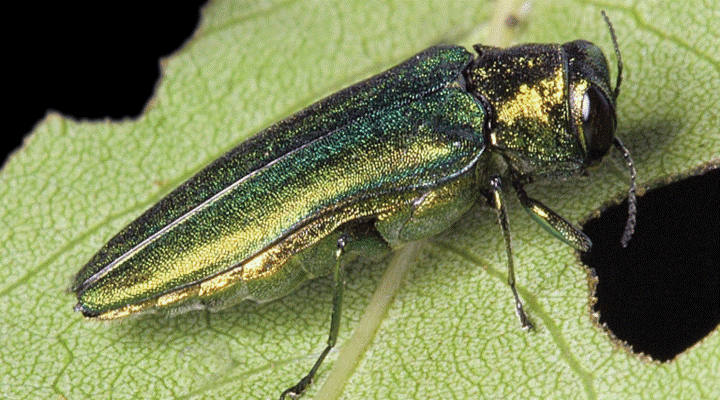
Photo Courtesy of: University of Kentucky Forest Extension on Nature.org
Being in the landscaping business and of the tree-loving variety, the Purple Polos at Kinghorn Gardens recognize this little bugger has some serious consequences attached to it regarding our own urban forest, but we believe panic should be tempered and options more plentiful. We suggest a different solution from the slash and burn mentality; Don’t Panic, Plant. To discuss the best way to go about this, we met with Eric Berg, Program Leader of Community Forestry and Sustainable Landscapes with the Nebraska Forest Service. He gave us some insight on what is really going on with the Emerald Ash Borer, what we can do to prepare and our options once they arrive.
The Emerald Ash Borer was spotted in Creston, Iowa just 100 miles away from Omaha; EAB can fly up to a half mile away from the tree in which they hatch, so it won’t be long until the make their way to the Cornhusker State. This infestation isn’t an “if” thing but more a “when” thing. Though there has not been a confirmed case of EAB in Nebraska, Berg suspects they are already here. The beetles are easily transported by the aid of unsuspecting human carriers, either in infected firewood, on transport trucks or they have even been known to hitch a ride on the bright yellow vests of tree clean up crews that travel around to help with ash removal in different states; talk about sneaky. And these little bugs can make a serious impact once they are established in a community; according to Berg, it takes only 15 years for the entire ash tree population to succumb to these insects.
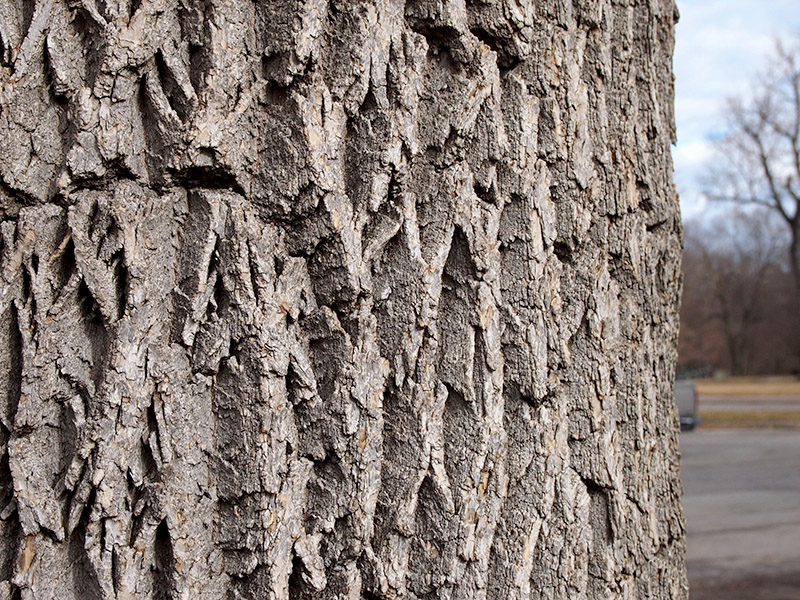
Over 11,000 ash trees are located in Omaha’s public areas and nearly double or triple that on private property, if we are not proactive and panic rather than plant, our urban forest will be drastically different in just a few decades. To see how these foreign beetles will affect you, first you must identify which trees on your property or in your neighborhood are ash. Ash trees have opposite leaf pattern, so the buds and leaves are located directly across from each other. Typically you will find 5-11 leaflets per leaf and they can be smooth or jagged. The bark on mature trees will usually have a distinct diamond pattern while the younger trees are smooth. Paddle shaped seed pods are another giveaway. If you are unsure as to whether you have an ash tree or not, send photos to hello@kinghorngardens.com for identification help. No ash cultivars in North America seem to be safe from EBA, so whether you have a green, white, blue, or black ash, Berg and Kinghorn Gardens advise you to assess the value of your tree before selecting a solution.
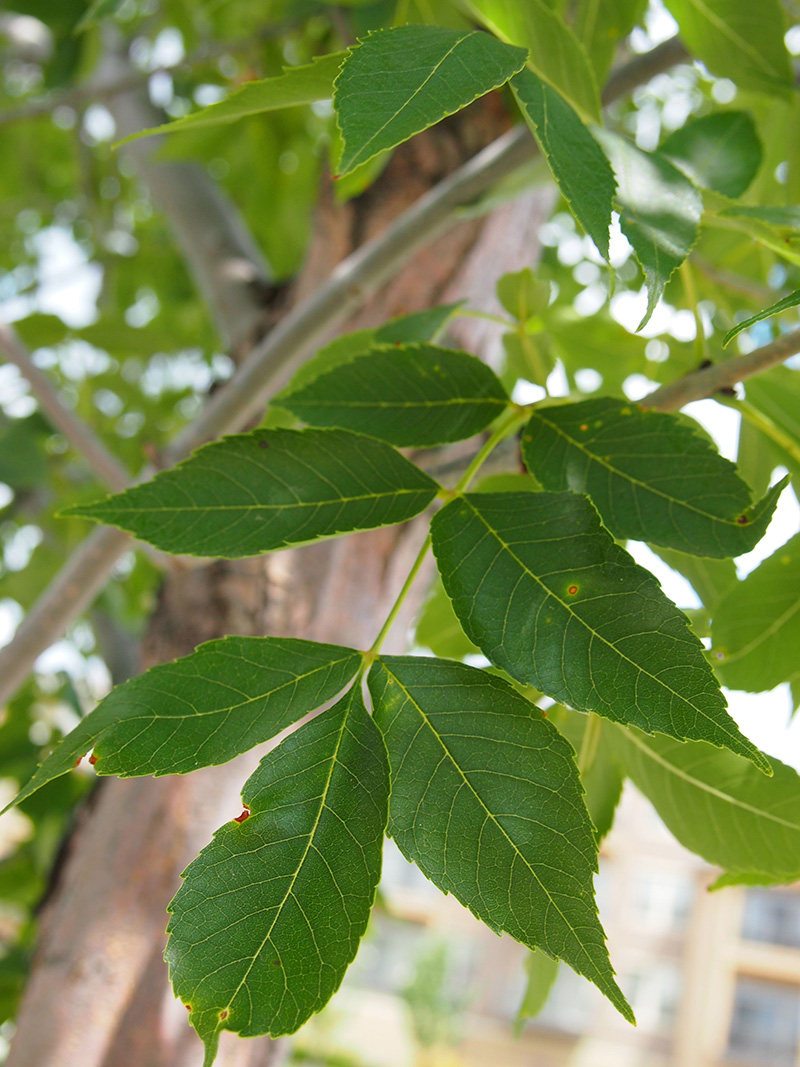
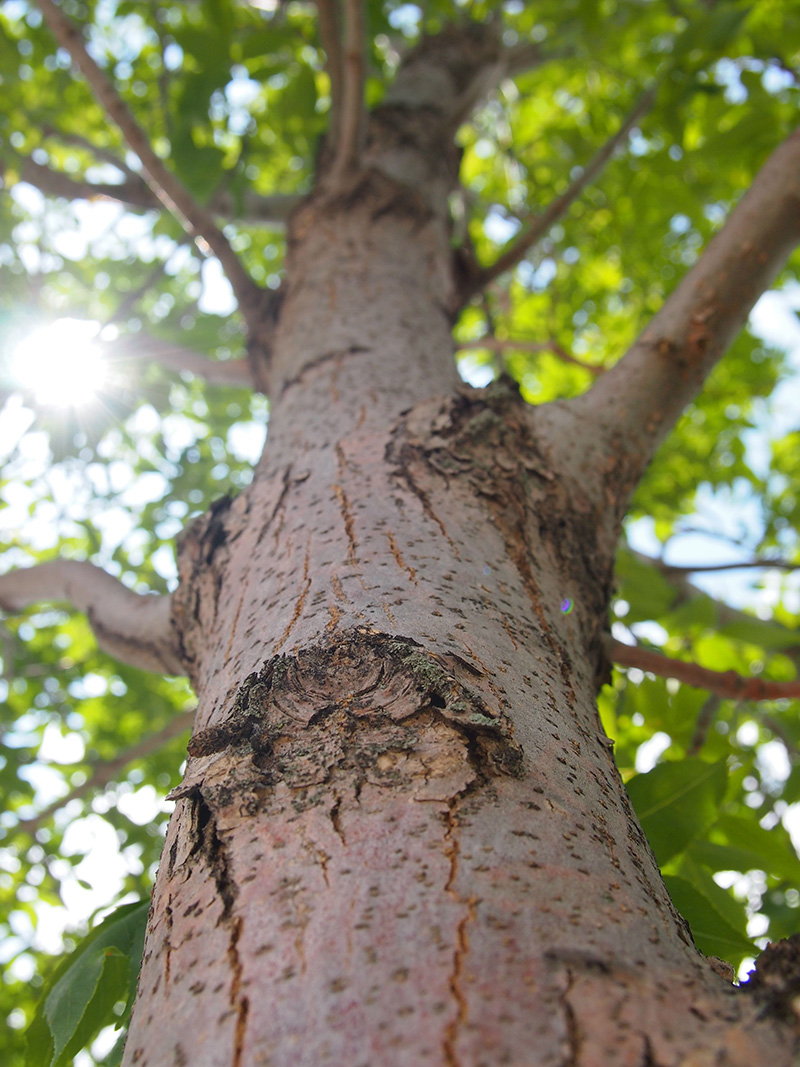
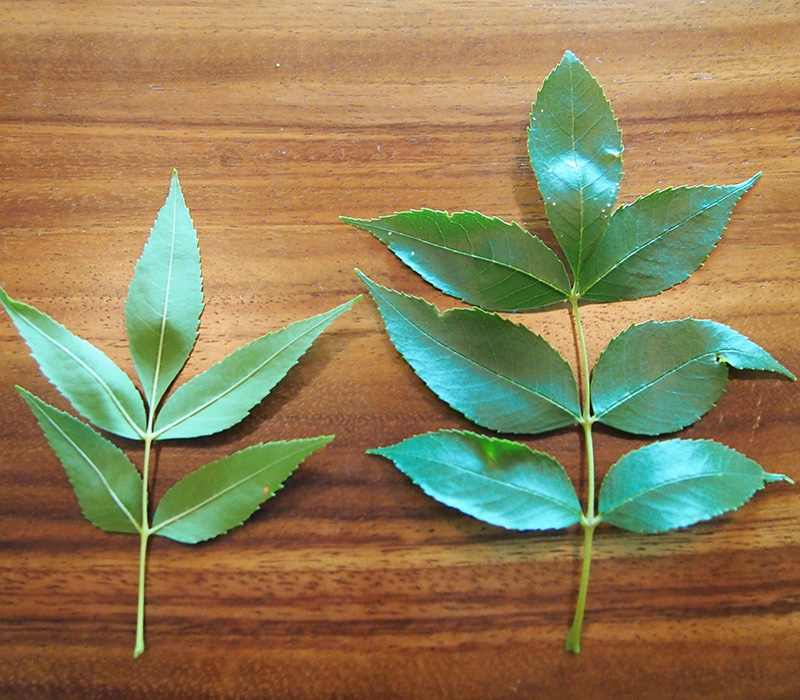
Trees provide many economical and environmental benefits to home owners including; stormwater management, property value, curb appeal, air quality, carbon dioxide output, shade and decreased utility costs for cooling and heating your home. To see the estimated dollar amounts associated with these benefits, check out http://www.treebenefits.com/calculator/. Important shade trees on property can truly make or break your outdoor experiences. Large ashes perfectly placed to shade your back patio for outdoor meals and entertaining provide a lot of value to your daily life. These economical and environmental benefits are pretty straightforward to calculate against the cost of treating, removing or replacing a tree; what get’s a little more tricky is judging the relative value of the sentimental benefits your tree brings. Say your twenty five year old ash tree was planted the same year as your oldest child and has her favorite tire swing hanging from it, you also planned to share with her kids one day – that particular tree has quite a bit sentimental value in comparison to a 13 year old ash your ex husband planted. Those examples were a bit extreme but there truly is a story behind every tree, it just depends on whether that story is important to you or not. The value of the tree can also be determined by the structure, age class, placement and health of the tree. Once you have assessed the value of your tree it becomes easier to weigh the benefits versus the costs of treatment, removal or replacement.
Berg’s rule of thumb for treating versus removing, without factoring in the sentimental value is:
TRUNK DIAMETER <12” — Replace
TRUNK DIAMETER 12”-24” — Worth treating
TRUNK DIAMETER >24” — Pre-plant replacement, sustain for 3-5 years with treatment if needed and then remove old tree to let new tree take over
If you decide your ash tree is worth treating, consult with an arborist to explore your options and the projected effects they will have on the life of your tree. EAB is not curable, but there are treatments available to prolong the life of your ash. Treatments are not necessary until there has been a confirmed cased of EAB within fifteen miles of your tree. Be aware of the environmental effects of chemicals used in treatments; treating over time may actually kill the tree you are trying to save.
But rather than focusing on the victims of these tiny green beetles, we prefer to look at the champion trees we can introduce into the our landscapes, by not panicking but planting. Diversification is key for reforesting. By over planting one tree species we are just asking for another battle with a different acronym labeled pest a decade or so down the road. There are far too many amazing trees to add to our urban forest to get stuck on just one. We went through a list with Berg to see what he thought of a few of our suggestions and here is just a small handful of alternatives for your replant. (*=native option)
When selecting a replacement, size is not the most important factor for tree success. Focus your attention, and dollars, on the method it was grown (B&B, bare root or container), the age class, and the species. Native plant material is tried and true for surviving the wacky weather of the mid-west, but having 10-25% of the total species be non-natives makes for great sampling of species and a unique urban forest. View this replant as an opportunity to enhance your landscape. A new tree on your property opens the door for a new landscape design or additional planting to compliment the arbor.
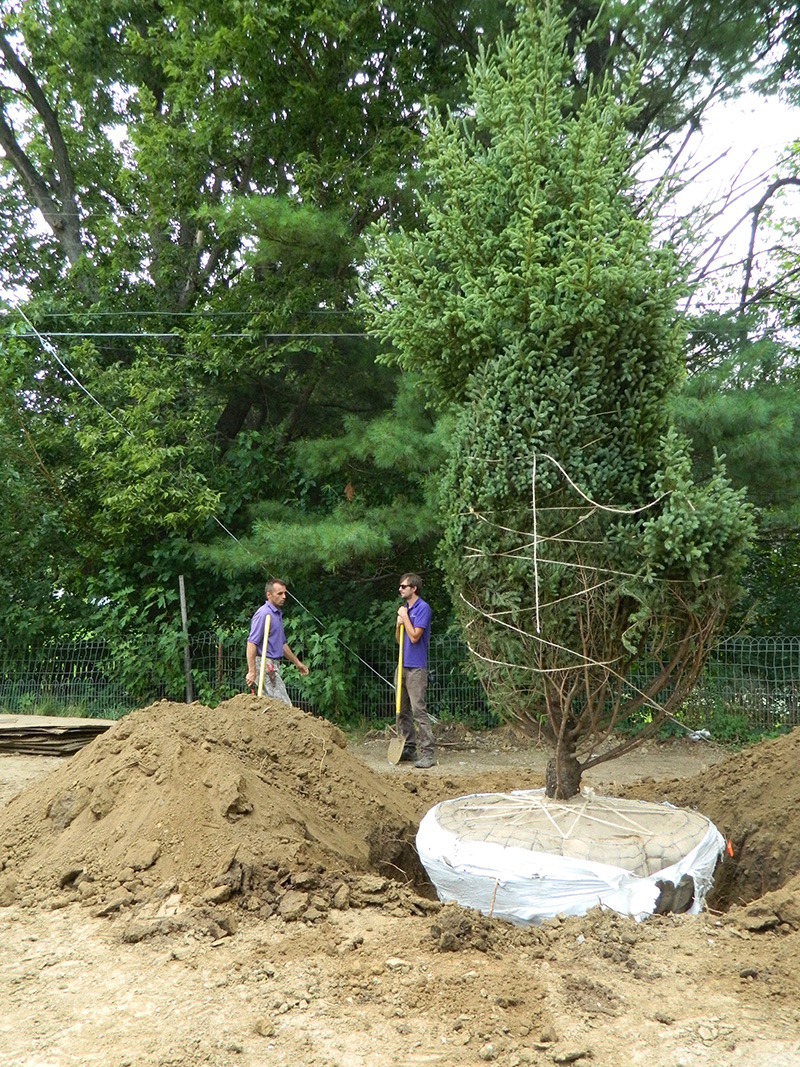
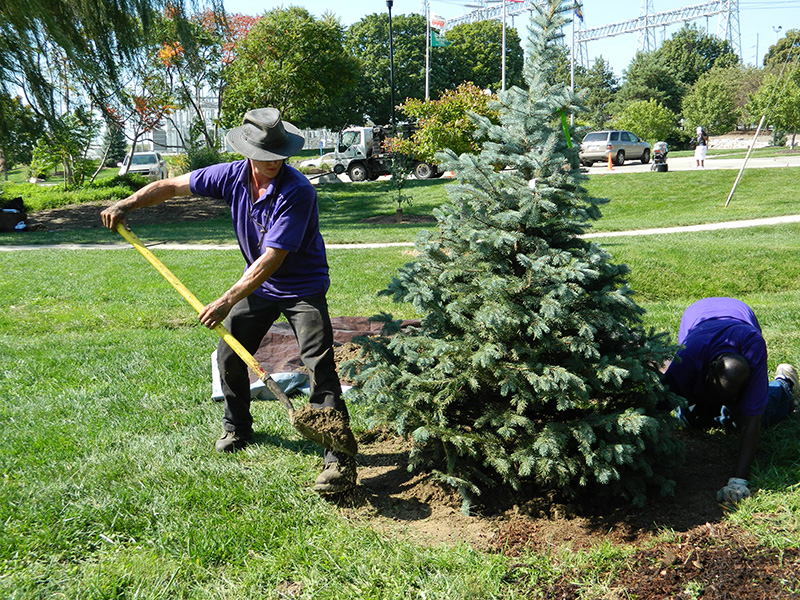
So rather than living in fear of EAB and planning funerals for your ash trees, don’t panic; instead, identify which trees will be affected, assess their value, and select a replacement. For help selecting the right tree for your home, connect with our tree selecting and siting experts at hello@kinghorngardens.com. And to learn more about reforesting in your community, check out http://retreenebraska.unl.edu.
Exciting! New plants in the garden! But wait....now what? How much water? When? Quick considerations before watering: Sun & Shade - Although most may say that shade gardens need less...
Spring fills us with wonder. Not in the ‘feeling of surprise mingled with admiration, caused by something beautiful’ kind of way. More along the lines of ‘what can I plant in my empty...